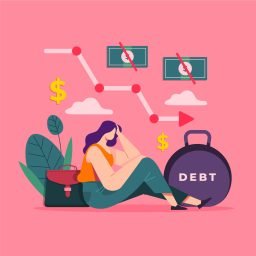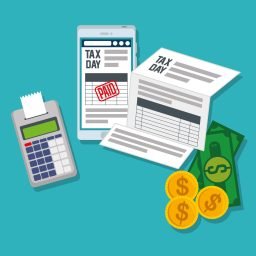
Credit card debt is a common financial burden that many people struggle with. Whether it’s from overspending, unexpected expenses, or simply not having a solid plan in place, credit card balances can quickly spiral out of control and become overwhelming. The good news is that there are effective strategies you can use to pay off your credit card debt and regain control of your finances.
In this comprehensive guide, we’ll explore the best strategies for paying off credit card debt, including proven techniques, expert tips, and the latest trends in personal finance. By the end of this post, you’ll have a clear roadmap to becoming debt-free and taking charge of your financial future.
The Importance of Paying Off Credit Card Debt
Before we dive into the strategies, it’s important to understand why paying off credit card debt should be a top priority. Here are a few key reasons why:
- High-Interest Rates: Credit cards typically have much higher interest rates than other types of loans, often ranging from 15% to 25% or more. This means that the longer you carry a balance, the more you’ll end up paying in interest, making it increasingly difficult to pay off the principal.
- Negative Impact on Credit Score: Carrying a high credit card balance can have a significant negative impact on your credit score. This can make it harder to qualify for loans, mortgages, or even rental applications in the future.
- Increased Stress and Anxiety: Dealing with credit card debt can be a major source of stress and anxiety, affecting your overall well-being and quality of life. Paying off this debt can alleviate this burden and improve your mental health.
- Missed Opportunities: When a large portion of your income goes towards credit card payments, it can limit your ability to save, invest, or pursue other financial goals, such as buying a home or starting a business.
Now that we’ve established the importance of addressing credit card debt, let’s explore the best strategies for doing so.
The Debt Snowball Method
One of the most popular and effective strategies for paying off credit card debt is the debt snowball method. Here’s how it works:
- List Your Debts: Make a list of all your credit card balances, starting with the card with the smallest balance.
- Make Minimum Payments: Make the minimum payment on all your credit cards, except for the one with the smallest balance.
- Focus on the Smallest Balance: Put as much extra money as you can towards the credit card with the smallest balance, while continuing to make the minimum payments on the others.
- Repeat the Process: Once the first card is paid off, take the amount you were paying on that card and apply it to the card with the next smallest balance. This creates a “snowball” effect, where your payments get larger and larger as you pay off each card.
The key advantage of the debt snowball method is that it provides a sense of momentum and accomplishment as you pay off each card, which can be highly motivating. Additionally, by starting with the smallest balance, you’ll be able to quickly eliminate one debt, freeing up more money to put towards the remaining balances.
The Debt Avalanche Method
Another effective strategy for paying off credit card debt is the debt avalanche method. This approach focuses on paying off the cards with the highest interest rates first, regardless of the balance size. Here’s how it works:
- List Your Debts: Make a list of all your credit card balances, along with their corresponding interest rates.
- Focus on the Highest Interest Rate: Put as much extra money as you can towards the credit card with the highest interest rate, while making the minimum payments on the others.
- Repeat the Process: Once the first high-interest card is paid off, take the amount you were paying on that card and apply it to the card with the next highest interest rate.
The main advantage of the debt avalanche method is that it saves you the most money in the long run, as you’re targeting the cards with the highest interest rates first. This can help you pay off your debt more quickly and reduce the overall amount of interest you’ll pay.
Negotiating with Credit Card Companies
Another strategy to consider is negotiating with your credit card companies. This can involve:
- Requesting a Lower Interest Rate: Call your credit card companies and politely request a lower interest rate. Many companies may be willing to do this, especially if you’ve been a good customer.
- Asking for a Hardship Program: If you’re experiencing financial hardship, some credit card companies offer special programs that can temporarily lower your interest rate or minimum payment.
- Requesting a Debt Settlement: In some cases, you may be able to negotiate a lump-sum payment to settle your debt for less than the full balance. This should be a last resort, as it can have a significant negative impact on your credit score.
Negotiating with credit card companies can be a time-consuming process, but it can potentially save you a significant amount of money in interest and fees.
Consolidating Your Debt
Another strategy for paying off credit card debt is to consolidate your balances into a single, lower-interest loan. This can be done through a personal loan, balance transfer credit card, or even a home equity loan or line of credit. Here’s how it works:
- Research Your Options: Compare the interest rates, fees, and terms of different debt consolidation options to find the one that best fits your needs.
- Consolidate Your Balances: Once you’ve selected a debt consolidation option, use the new loan or credit card to pay off your existing credit card balances.
- Focus on the New Loan: Now that your credit card balances are consolidated, make a plan to pay off the new, lower-interest loan as quickly as possible.
The main benefit of debt consolidation is that it can significantly reduce the amount of interest you’re paying, making it easier to pay off your debt faster. However, it’s important to be cautious and ensure that you’re not just transferring your debt to a new loan with unfavorable terms.
Budgeting and Lifestyle Changes
In addition to the debt-repayment strategies mentioned above, it’s crucial to address the underlying behaviors and spending habits that led to your credit card debt in the first place. This often involves creating a detailed budget and making lifestyle changes to free up more money for debt payments.
- Create a Detailed Budget: Track your income and expenses, and identify areas where you can cut back on spending. This will help you allocate more money towards your debt payments.
- Reduce Discretionary Spending: Look for opportunities to cut back on non-essential expenses, such as dining out, entertainment, and subscriptions. Even small reductions can make a big difference.
- Increase Your Income: Consider taking on a side gig or freelance work to boost your income and dedicate the extra earnings towards your debt.
- Automate Your Payments: Set up automatic payments for your credit card bills to ensure you never miss a payment and avoid late fees.
- Avoid New Debt: Once you’ve paid off your credit card debt, make a commitment to avoid taking on new debt in the future. This will help you maintain your financial progress.
Implementing a comprehensive budgeting and lifestyle change strategy can be challenging, but it’s an essential component of a successful debt-repayment plan.
Seeking Professional Help
If you’re struggling to manage your credit card debt on your own, it may be beneficial to seek professional help. This can include:
- Credit Counseling: A credit counseling agency can help you negotiate with your creditors, create a debt management plan, and provide guidance on budgeting and financial management.
- Debt Consolidation Loans: As mentioned earlier, a debt consolidation loan can simplify your payments and reduce the amount of interest you’re paying. A financial advisor can help you explore and compare your options.
- Bankruptcy: In some cases, filing for bankruptcy may be the best option to eliminate your credit card debt. This should be a last resort, as it can have a significant negative impact on your credit score and financial future.
Seeking professional help can be especially valuable if you’re feeling overwhelmed or if your credit card debt is causing significant financial or emotional distress.
Ready to take control of your finances? Visit upgrade.com now to explore a range of financial products, including Personal Loans, Auto Refinance Loans, Home Improvement Loans, Personal Credit Lines, and Upgrade Card. Let Upgrade help you achieve your financial goals today!
Staying Motivated and Accountable
Paying off credit card debt can be a long and challenging process, so it’s important to stay motivated and accountable throughout the journey. Here are some tips:
- Set Achievable Goals: Break your debt-repayment plan into smaller, manageable goals to celebrate your progress along the way.
- Track Your Progress: Use a debt-tracking app or spreadsheet to monitor your payments and see your progress over time.
- Celebrate Milestones: Treat yourself to a small reward, such as a special dinner or a day off, when you reach a significant milestone in your debt-repayment journey.
- Enlist Support: Share your debt-repayment plan with friends and family, and ask them to hold you accountable and provide encouragement.
- Stay Positive: Remind yourself of the long-term benefits of becoming debt-free, and don’t get discouraged by setbacks or slow progress.
By staying motivated and accountable, you’ll be more likely to stick to your debt-repayment plan and achieve your financial goals.
Conclusion
Paying off credit card debt can be a daunting task, but with the right strategies and a solid plan in place, it’s an achievable goal. Whether you choose the debt snowball method, the debt avalanche approach, or a combination of tactics, the key is to stay focused, disciplined, and committed to becoming debt-free.
Remember, addressing your credit card debt is not just about numbers and balances – it’s about regaining control of your financial future and improving your overall well-being. By implementing the strategies outlined in this guide, you’ll be well on your way to a debt-free life and a brighter financial outlook.
If you’re ready to take the first step, start by reviewing your credit card balances, interest rates, and spending habits. From there, create a personalized debt-repayment plan that works best for your unique situation. With determination and the right approach, you can break free from the burden of credit card debt and build a stronger, more secure financial future.
Share Your Expertise, Build Your Business. Tired of limitations?
Create & sell online courses with Teachable. Keep 100% control. Start your free trial!


















